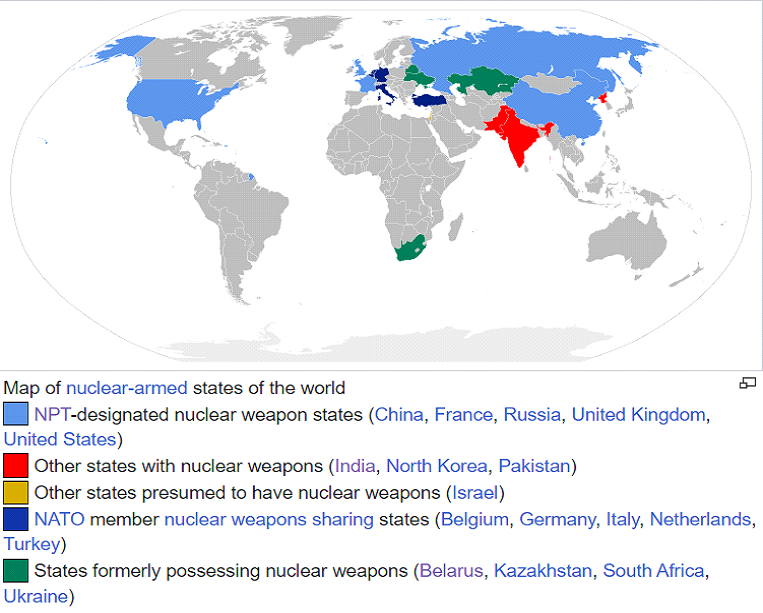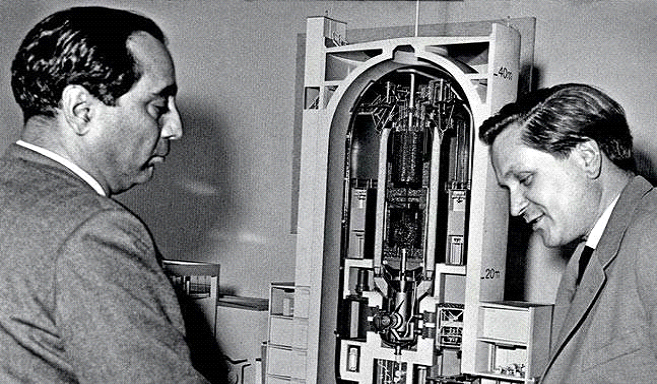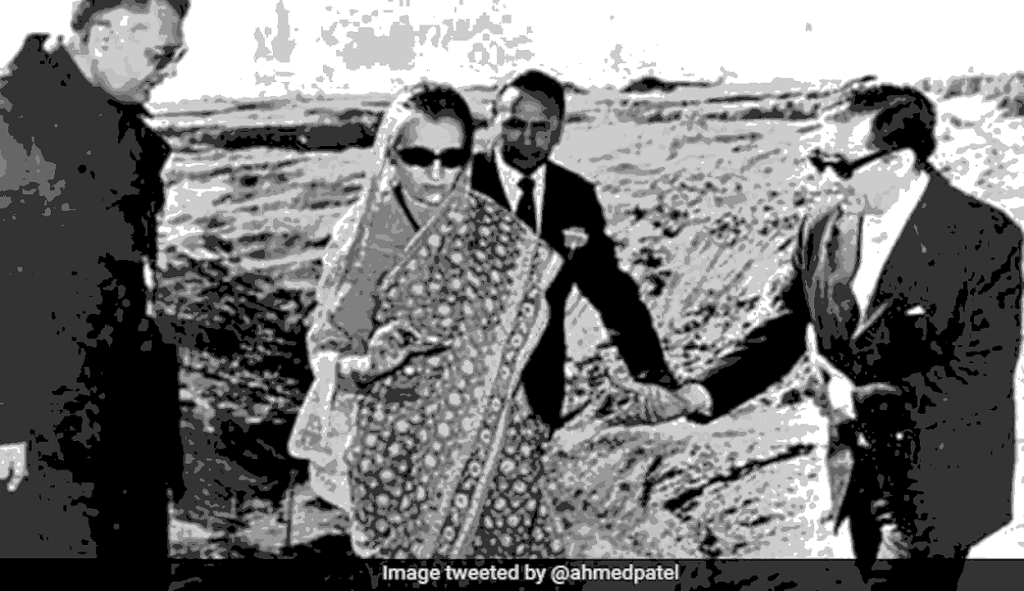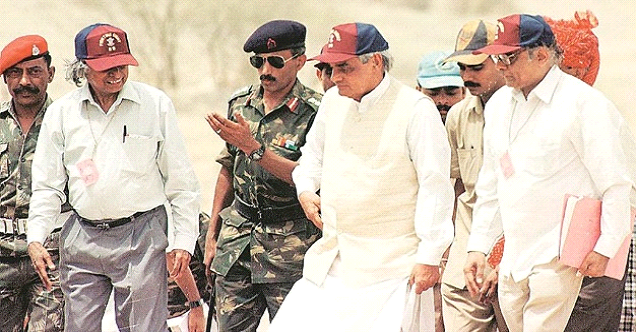
Nuclear weapons are weapons of mass destruction-they possess the capability to wipe out hundreds of thousands and cause direct harm to several millions. In human history, they have only been used twice-both times by the United States. However, at the time when they were used, nuclear weaponry was new. Also, the US had a monopoly over the warheads. This is no longer the case. Nuclear weapons are now much stronger and there is multi-polarity as many world powers possess them. A country’s nuclear policy forms a large and important part of its foreign policy.
India is a country which has been riddled with stringent and persisting problems since independence-whether it be the partition, the Cold War, several wars with its neighbours and issues of territorial claims. Particularly, her relationship with her neighbours has been shaky at best, and sometimes even hostile. Given that two of her most threatening neighbours (China and Pakistan) are also nuclear powers, India has had to maintain a healthy nuclear arsenal, to be used for purposes of deterrence or otherwise.
But how did nuclear weapons emerge in India? Let’s take a look.
After Independence

Jawaharlal Nehru, the first Prime Minister of India was a serious proponent of nuclear disarmament and was committed to building a world where such weapons did not exist, as he believed they would cause unimaginable and irreparable destruction to the world. He mentioned in many of his speeches and writings that nuclear weapons must not be used or tested. He was a signatory to the Russell-Einstein Manifesto in 1955, which called for an end to nuclear weapon testing and use.
However, at the same time Nehru wanted a peaceful nuclear energy program. India’s nuclear program can be traced back to 1944, when Homi Jehangir Baba founded the nuclear research centre, the Tata Institute of Fundamental Research.
India’s subsequent loss to China in 1962, under Nehru’s reign provided incentive for India to develop nuclear weaponry to ward off Chinese aggression. By 1964, India had achieved technological capability to develop nuclear weapons.
The then Prime Minister Lal Bahadur Shastri was staunchly opposed to developing nuclear weapons but due to intense political pressure had to give in and announced that India would pursue “peaceful nuclear explosions”. This was caused partly due to India’s inability to gain a defensive guarantee from the US or the USSR, due to Nehru’s Non-Aligned ideology.
Non-Proliferation Treaty and India’s Nuclear Tests

It is important to note that in 1965, a treaty called the Non-Proliferation Treaty (NPT) was introduced in the UN. Its objective was to “prevent the spread of nuclear weapons and weapons technology, to promote cooperation in the peaceful uses of nuclear energy, and to further the goal of achieving nuclear disarmament and general and complete disarmament.” India is one of the only countries to not sign this treaty as she believed that it was discriminatory and repressive. This treaty sought to restrict nuclear powers to the P5 at the time (US, UK, USSR, China, France). This doctrine was opposed by India. It is interesting to note that Pakistan also did not sign this treaty.
India tested its first nuclear weapon in 1974, in an operation codenamed “Smiling Buddha”, under the reign of Indira Gandhi. Despite this, Prime Ministers Indira Gandhi, Morarji Desai and Rajiv Gandhi opposed nuclear weaponization beyond theoretical research.
This situation would only change in the 1980s, with the setup of Pakistan’s nuclear program. Prime Minister Rajiv Gandhi gave the thumbs-up to develop nuclear weapons. The Indian administration continued to develop its arsenal after Gandhi lost power in 1989.
Comprehensive Test Ban Treaty (CTBT) and further tests

In 1995, another treaty was introduced in the United Nations. It was called the Comprehensive Test Ban Treaty (CTBT) and sought to curb nuclear weapon test explosions for civilian and military purposes. Again, India was not a signatory. Pakistan too was not a signatory.
In 1998, two further tests were conducted by the Government of India (“Operation Shakti”) under the 13-day reign of PM Atal Bihari Vajpayee. This is universally seen as one of independent India’s greatest feats. Following these tests, the United States and Japan imposed economic sanctions on India, which have since been lifted.
India’s Nuclear Arsenal
As of January 2023, India currently has eight nuclear capable weaponry systems: two aircraft, four land-based ballistic missiles and two sea-based ballistic missiles. India believes in a doctrine of nuclear opacity; therefore, the exact size of its nuclear arsenal is not publicly known but it is widely believed that she has around 160 warheads. These serve as effective deterrents.
Indo-U.S. Nuclear Deal

The Indo-U.S. nuclear deal was struck between India and the United States in 2005, under the leadership of PM Manmohan Singh and President George W. Bush. Under this deal, India agreed to separate its civilian and military nuclear facilities and placed its civilian facilities under International Atomic Energy Agency safeguards. This deal helped strengthen US-Indo relations and marked a new era of international non-proliferation. It also marked India as the only non-signatory of the NPT to still be allowed to conduct nuclear commerce with the world.
No First Use (NFU) Policy and Current Scenario
India adopted the doctrine of No First Use in 1999 in regard to nuclear weapons after its second series of tests in 1998. This policy asserts that Indian nuclear weapons may only be used for purposes of deterrence and that India shall follow a retaliation-only model of nuclear weapon usage. India has stuck to this policy despite skirmishes and increasing aggression with countries, such as Pakistan.
The wording of the policy has since been edited. Shivshankar Menon, India’s then National Security Advisor changed the wording from “no first use” to “no first use against non-nuclear weapon states.” It has also been stated that India will seek severe retribution in case of any nuclear weapon usage against her. Many prominent figures in Indian politics have questioned why India has bound itself with such a policy.
Defence Minister Rajnath Singh has since stated that India’s NFU policy might change in the future depending on the circumstances. The Narendra Modi led BJP government has seen a shift in this policy.
Conclusion
It is important to note that India’s production of nuclear weapons was motivated not by the desire to possess such weapons, but for weapon superiority over its neighbours. India today remains a responsible owner of nuclear weapons.
Note: I have taken the photographs/illustrations from internet. They belong to the author/photographer/designer of the original article/s.

Amazing article!
Thank you